Comment?
Archive for Tháng Bảy, 2011
28 Th7
Hình ảnh xẹp nhĩ
23 Th7
Dx?
21 Th7
Các loại chỉnh hình thanh quản
Thyroplasty (Laryngoplasty, glottoplasty, Laryngeal framework surgery)
Isshiki et al. , four types 1974 ….. Notice this mnemonic. — Men Like Short Ladies
type I : MEDIALIZATION — Lateral compression (medial displacement)
type II :LATERALIZATION —- Lateral expansion (lateral displacement)
type III: Shortening (relaxation)
type IV: Lengthening (stretching, tensioning)
Thyroplasty type I: popular use
10 Th7
Trách nhiệm của người Bác sỹ trong thời buổi hiện tại
Nguồn: http://www.ykhoanet.com
Y học cao thượng ở chỗ trách nhiệm
Duhamel
Trách nhiệm của người bác sĩ, nói cho đúng ra, không phải là một vấn đề mới mẻ, bắng cớ là từ trên bốn ngàn năm nay, tại Babylone, vua Hammourabi đã ban hành một đạo luật mang tên ông để thưởng phạt những y sĩ trong khi hành nghề, thưởng tiền bạc nếu khỏi bệnh và chặt tay chân nếu bệnh nhân mang tật hoặc phải thiệt mạng.
Ảnh hưởng của đạo luật Hammourabi đã lan rộng ra khỏi Babylone và trong Cựu Ước kinh, các triết gia Do Thái đã nói : “Có vay có trả, răng đền răng, mắt trả mắt”.
Tuy nhiên ta phải công nhận là cho mãi cuối thế kỷ thứ 19, quan niệm về trách nhiệm của người bác sĩ vẫn không hề thay đổi. Điều đó xét cho cùng cũng không có g2 lạ, bởi y học trên hai ngàn năm, hoàn toàn gần như chỉ chuyên về miêu tả, người bác sỉ ở thế kỷ trước, tuy biết rõ cơ thể học, nhân thể sinh lý học và cách phân chia bệnh ra từng loại, nhưng đến khi chữa bệnh, thì đành phải bó tay, ngoại trừ trường hợp bệnh nhân mắc bệnh sốt rét cơn (paludisme) thì mới cho uống Qui nine (tìm ra năm 1820)
Đừng nói đâu xa, cách đây mới khoảng 30 năm, những tiến bộ của phép trị liệu vẫn tương đối không đáng kể, người bác sĩ có thể định bệnh được một cách chắc chắn, nhưng đến khi chữa thì không chữa nỗi.
Nhưng tình thế ngày nay khác hẳn, Ngày nay, y học đã tiến một bước rất xza, ngoài sức tưởng tượng của con người và hầu như cướp cả quyền tạo hóa, nào mổ tim, thay tim, mổ óc, cắt phổi, ghép thận, ghép mắt v. v…
Nào chỉ có thế thôi !Ngày nay y học đã phát minh ra những thứ thuốc có thể thay đổi hoàn toàn tâm tính của con người ta. ngày nay ai cũng biết nhờ y học mà phụ nữ có thể hạn chế được sinh đẻ.
Tóm lại, thật đúng như lời nhà bác học Jean Rostand đã nói:”Ngày nay khoa học đã khiến chúng ta trở nên những bậc thánh thần trước khi chúng ta xứng đáng làm người”.
9 Th7
Hội chứng Usher
Nguồn: Hội TMH Jordan
Usher Syndrome
What is Usher syndrome?
Who is affected by Usher syndrome?
What causes Usher syndrome?
…What are the characteristics of the three types of Usher syndrome?
How is Usher syndrome diagnosed?
Is genetic testing for Usher syndrome available?
How is Usher syndrome treated?
What research is being conducted on Usher syndrome?
What are some of the latest research findings?
What is Usher syndrome?
Usher syndrome is the most common condition that affects both hearing and vision. A syndrome is a disease or disorder that has more than one feature or symptom. The major symptoms of Usher syndrome are hearing loss and an eye disorder called retinitis pigmentosa, or RP. RP causes night-blindness and a loss of peripheral vision (side vision) through the progressive degeneration of the retina. The retina is a light-sensitive tissue at the back of the eye and is crucial for vision. As RP progresses, the field of vision narrows—a condition known as “tunnel vision”—until only central vision (the ability to see straight ahead) remains. Many people with Usher syndrome also have severe balance problems.
There are three clinical types of Usher syndrome: type 1, type 2, and type 3. In the United States, types 1 and 2 are the most common types. Together, they account for approximately 90 to 95 percent of all cases of children who have Usher syndrome.
What causes Usher syndrome?
Usher syndrome is inherited, which means that it is passed from parents to their children through genes. Genes are located in almost every cell of the body. Genes contain instructions that tell cells what to do. Every person inherits two copies of each gene, one from each parent. Sometimes genes are altered, or mutated. Mutated genes may cause cells to act differently than expected.
Usher syndrome is inherited as an autosomal recessive trait. The term autosomal means that the mutated gene is not located on either of the chromosomes that determine a person’s sex; in other words, both males and females can have the disorder and can pass it along to a child. The word recessive means that, to have Usher syndrome, a person must receive a mutated form of the Usher syndrome gene from each parent. If a child has a mutation in one Usher syndrome gene but the other gene is normal, he or she is predicted to have normal vision and hearing. People with a mutation in a gene that can cause an autosomal recessive disorder are called carriers, because they “carry” the gene with a mutation, but show no symptoms of the disorder. If both parents are carriers of a mutated gene for Usher syndrome, they will have a one-in-four chance of having a child with Usher syndrome with each birth.
Usually, parents who have normal hearing and vision do not know if they are carriers of an Usher syndrome gene mutation. Currently, it is not possible to determine whether a person who does not have a family history of Usher syndrome is a carrier. Scientists at the National Institute on Deafness and Other Communication Disorders are hoping to change this, however, as they learn more about the genes responsible for Usher syndrome.
What are the characteristics of the three types of Usher syndrome?
Type 1
Children with type 1 Usher syndrome are profoundly deaf at birth and have severe balance problems. Many of these children obtain little or no benefit from hearing aids. Parents should consult their doctor and other hearing health professionals as early as possible to determine the best communication method for their child. Intervention should be introduced early, during the first few years of life, so that the child can take advantage of the unique window of time during which the brain is most receptive to learning language, whether spoken or signed. If a child is diagnosed with type 1 Usher syndrome early on, before he or she loses the ability to see, that child is more likely to benefit from the full spectrum of intervention strategies that can help him or her participate more fully in life’s activities.
Because of the balance problems associated with type 1 Usher syndrome, children with this disorder are slow to sit without support and typically don’t walk independently before they are 18 months old. These children usually begin to develop vision problems in early childhood, almost always by the time they reach age 10. Vision problems most often begin with difficulty seeing at night, but tend to progress rapidly until the person is completely blind.
Type 2
Children with type 2 Usher syndrome are born with moderate to severe hearing loss and normal balance. Although the severity of hearing loss varies, most of these children can benefit from hearing aids and can communicate orally. The vision problems in type 2 Usher syndrome tend to progress more slowly than those in type 1, with the onset of RP often not apparent until the teens.
Type 3
Children with type 3 Usher syndrome have normal hearing at birth. Although most children with the disorder have normal to near-normal balance, some may develop balance problems later on. Hearing and sight worsen over time, but the rate at which they decline can vary from person to person, even within the same family. A person with type 3 Usher syndrome may develop hearing loss by the teens, and he or she will usually require hearing aids by mid- to late adulthood. Night blindness usually begins sometime during puberty. Blind spots appear by the late teens to early adulthood, and, by mid-adulthood, the person is usually legally blind.
How is Usher syndrome diagnosed?
Because Usher syndrome affects hearing, balance, and vision, diagnosis of the disorder usually includes the evaluation of all three senses. Evaluation of the eyes may include a visual field test to measure a person’s peripheral vision, an electroretinogram (ERG) to measure the electrical response of the eye’s light-sensitive cells, and a retinal examination to observe the retina and other structures in the back of the eye. A hearing (audiologic) evaluation measures how loud sounds at a range of frequencies need to be before a person can hear them. An electronystagmogram (ENG) measures involuntary eye movements that could signify a balance problem.
Early diagnosis of Usher syndrome is very important. The earlier that parents know if their child has Usher syndrome, the sooner that child can begin special educational training programs to manage the loss of hearing and vision.
Is genetic testing for Usher syndrome available?
So far, 11 genetic loci (a segment of chromosome on which a certain gene is located) have been found to cause Usher syndrome, and nine genes have been pinpointed that cause the disorder. They are:
Type 1 Usher syndrome: MY07A, USH1C, CDH23, PCDH15, SANS
Type 2 Usher syndrome: USH2A, VLGR1, WHRN
Type 3 Usher syndrome: USH3A
With so many possible genes involved in Usher syndrome, genetic tests for the disorder are not conducted on a widespread basis. Diagnosis of Usher syndrome is usually performed through hearing, balance, and vision tests. Genetic testing for a few of the identified genes is clinically available. To learn about laboratories that conduct clinical testing, visit the Web site www.GeneTests.org and search the laboratory directory by typing in the term “Usher syndrome.” Genetic testing for additional Usher syndrome genes may be available through clinical research studies. To learn about clinical trials that include genetic testing for Usher syndrome, visit the Web site www.clinicaltrials.gov and type in the search term “Usher syndrome” or “Usher genetic testing.”
How is Usher syndrome treated?
Currently, there is no cure for Usher syndrome. The best treatment involves early identification so that educational programs can begin as soon as possible. The exact nature of these programs will depend on the severity of the hearing and vision loss as well as the age and abilities of the person. Typically, treatment will include hearing aids, assistive listening devices, cochlear implants, or other communication methods such as American Sign Language; orientation and mobility training; and communication services and independent-living training that may include Braille instruction, low-vision services, or auditory training.
Some ophthalmologists believe that a high dose of vitamin A palmitate may slow, but not halt, the progression of retinitis pigmentosa. This belief stems from the results of a long-term clinical trial supported by the National Eye Institute and the Foundation for Fighting Blindness. Based on these findings, the researchers recommend that most adult patients with the common forms of RP take a daily supplement of 15,000 IU (international units) of vitamin A in the palmitate form under the supervision of their eye care professional. (Because people with type 1 Usher syndrome did not take part in the study, high-dose vitamin A is not recommended for these patients.) People who are considering taking vitamin A should discuss this treatment option with their health care provider before proceeding. Other guidelines regarding this treatment option include:
Do not substitute vitamin A palmitate with a beta-carotene supplement.
Do not take vitamin A supplements greater than the recommended dose of 15,000 IU or modify your diet to select foods with high levels of vitamin A.
Women who are considering pregnancy should stop taking the high-dose supplement of vitamin A three months before trying to conceive due to the increased risk of birth defects.
Women who are pregnant should stop taking the high-dose supplement of vitamin A due to the increased risk of birth defects.
In addition, according to the same study, people with RP should avoid using supplements of more than 400 IU of vitamin E per day.
What research is being conducted on Usher syndrome?
Researchers are currently trying to identify all of the genes that cause Usher syndrome and determine the function of those genes. This research will lead to improved genetic counseling and early diagnosis, and may eventually expand treatment options.
Scientists also are developing mouse models that have the same characteristics as the human types of Usher syndrome. Mouse models will make it easier to determine the function of the genes involved in Usher syndrome. Other areas of study include the early identification of children with Usher syndrome, treatment strategies such as the use of cochlear implants for hearing loss, and intervention strategies to help slow or stop the progression of RP.
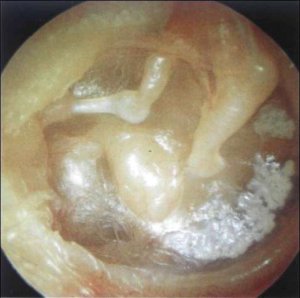
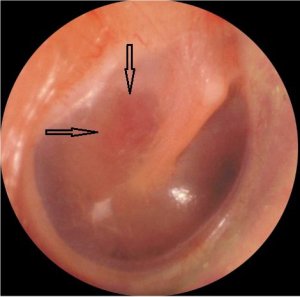
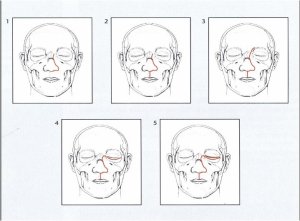
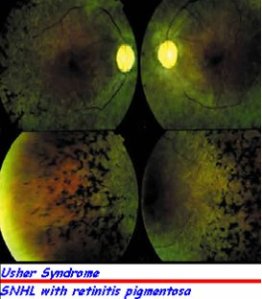
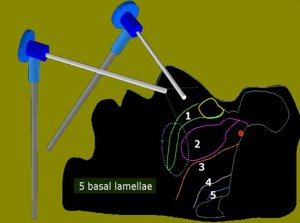







COMMENTS